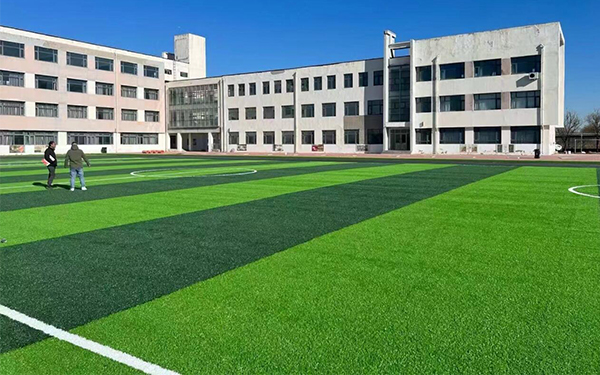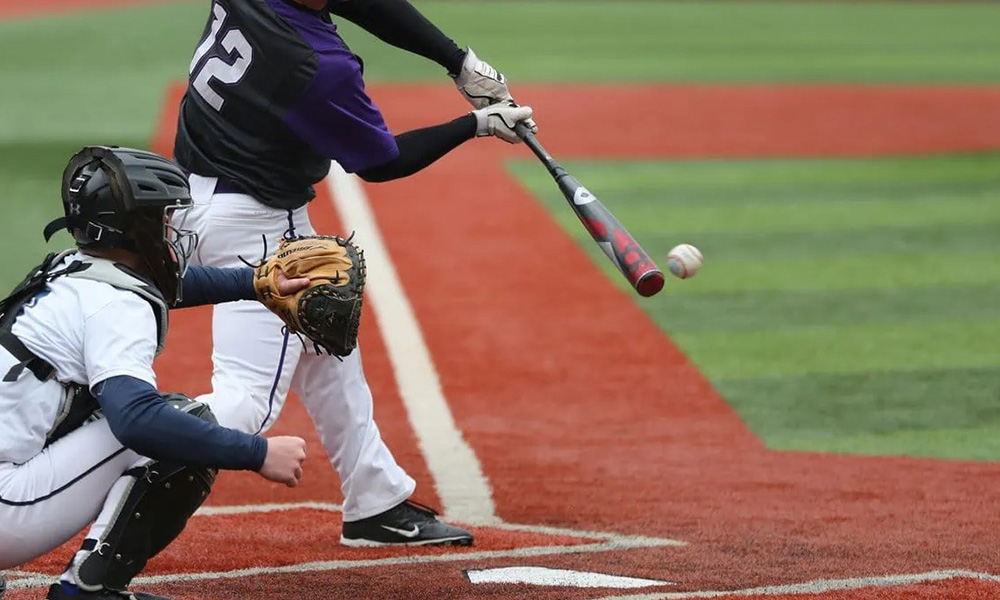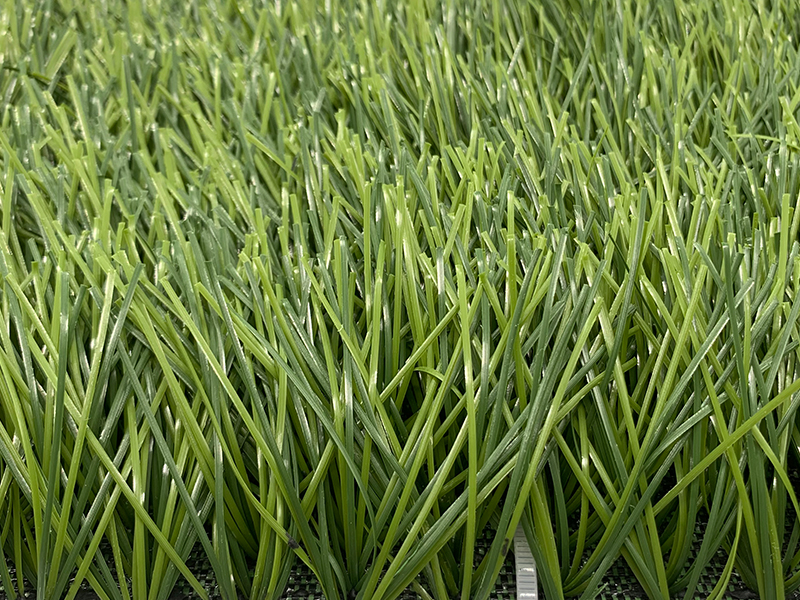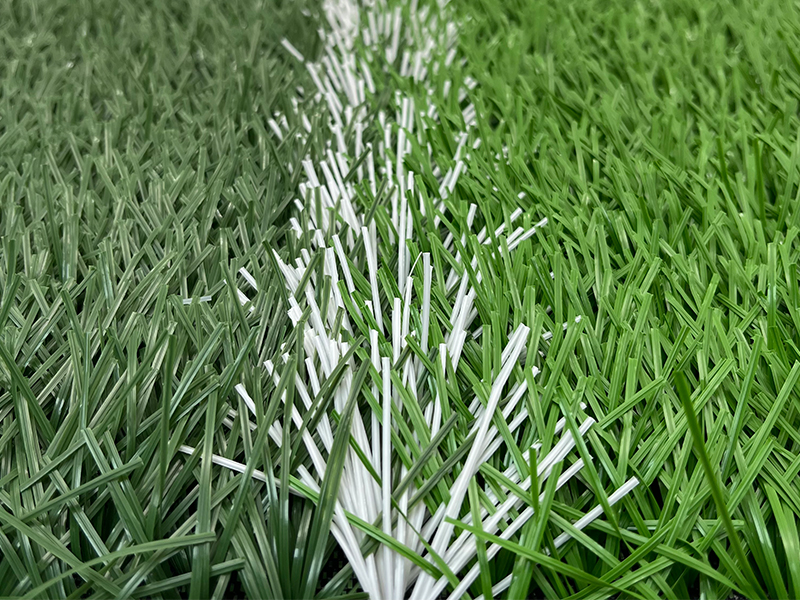Non-infill Sports Artificial Grass: Definition, Pros & Uses
What is non infill artificial grass?
Artificial turf for football field without filling is a high-performance turf system that does not require the addition of rubber particles, quartz sand and other fillers. This kind of turf is designed by optimizing the height, density and fiber structure of the grass to achieve the purpose of excellent sports performance and safety without filling. It not only saves the cost of using filling materials and the installation process, but also performs well in environmental protection and maintenance convenience.
Materials and Functions
The exceptional performance of non-infill artificial turf stems from its carefully selected materials and precision structural design.
| Core Components | Materials and Craftsmanship | Core Functionality |
| Turf fibers | PE, PP, Specialty Polymers | Durable foundation, UV-resistant, extended lifespan |
| Straight-wire structure | Reinforcing fiber | Provides upright support and enhances wear resistance. |
| Woven wire structure | Special Bending Process | Increase weight and density, optimize cushioning performance |
| Underlying System | Eco-friendly PU adhesive backing + Mesh/Double-layer EL backing fabric | Secure the grass fibers to ensure overall stability and durability. |
What was the reason for its design?
· More durable: PE/PP material and hybrid construction jointly resist foot traffic, sunlight, and weather impacts.
· Safer: The natural cushioning effect from curved fibers effectively reduces the risk of injury during sports activities.
· More stable: Professional backing adhesive and backing fabric combination prevent grass fiber shedding or base layer deformation after use.
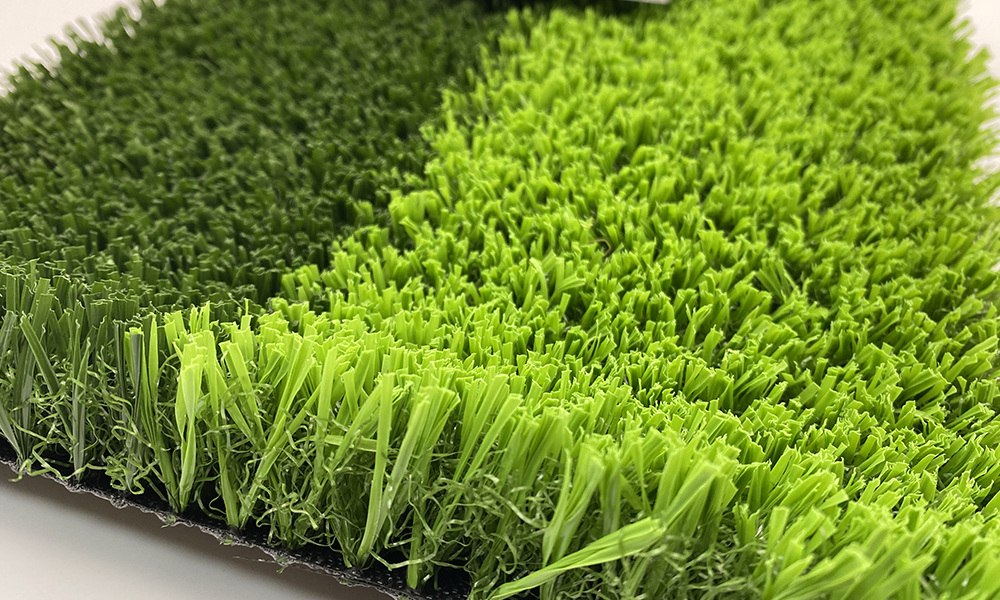
Core technology and material composition
| Core Technology | Materials and Processes | Advantages |
| Double-layer structure design | Upper layer of straight fibers + lower layer of curly fibers | Simulates the appearance and elasticity of real grass while providing solid support, no filling required. |
| Grass fiber parameters | Grass height 40–55 mm + high-density tufting | Effectively prevents lodging and significantly extends service life. |
| Raw materials | PE (Soft underfoot feel) + PP (Wear-resistant and weather-resistant) | Combining comfort and durability, suitable for all climates |
| Functional additives | UV-resistant, antioxidant, antistatic agent | Prevent fading and aging, enhance safety during use |
Advantages of non-filling artificial turf
1. Environmental protection and safety
No risk of filling particles flying: traditional rubber particles are dangerous for inhalation or eyes, and non-filling grass effectively eliminates this hidden danger;
No odor, no pollution: reducing microplastic emissions to the environment, which is conducive to creating green and low-carbon venues.
2. Strong comfort
Soft foot feel, good resilience, closer to natural turf, reducing sports impact, protecting athletes' knees and ankles;
The surface temperature is relatively low, especially suitable for use in high temperature environment areas.
3. Low maintenance cost
No need to add or replace rubber particles regularly;
Easy to clean, not easy to breed bacteria;
The grass is not easy to fall over, reducing the frequency of daily combing.
4. High construction efficiency
Easy to install, omitting the process of paving and compacting the filling materials;
Suitable for rapid deployment of projects, especially for places with tight construction schedules such as schools and communities.
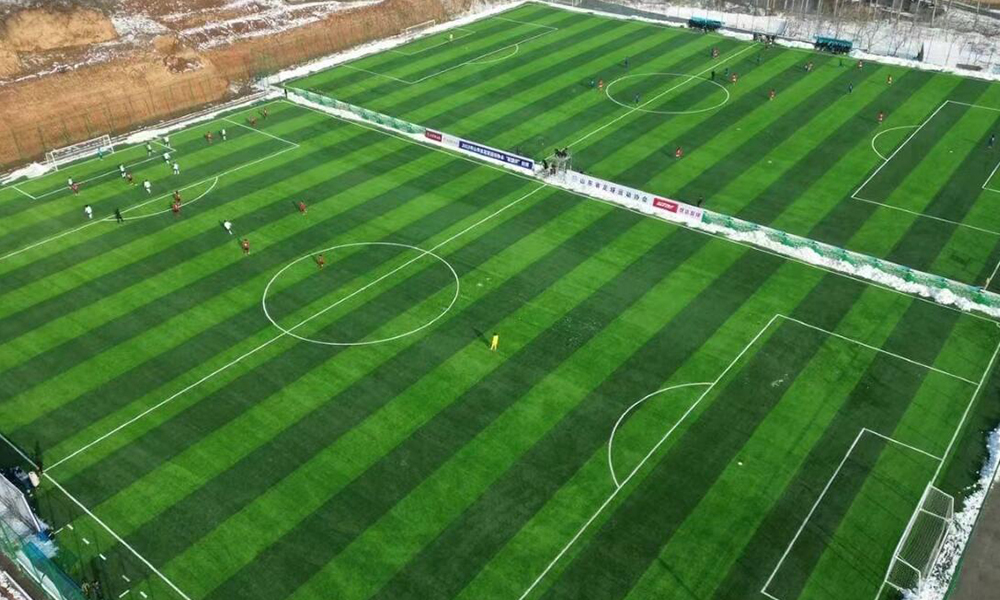
Exploring the Perfect Applications for Non-infill Artificial Turf
Five-a-side Soccer Field
· Short Grass Design + Superior Performance: Delivers the precise bounce and optimal ball trajectory required for competition, meeting the demands of professional play.
Caged Mini Football Field
· Non-infill Structure: Completely eliminates loose filler material, keeping the area tidy.
· Exceptional wear resistance: Easily handles heavy use with minimal maintenance required.
Indoor Soccer Field
· Zero-Particle Dust: Eliminates contamination from fillers, keeps air fresh, and makes cleaning effortless.
· Full Performance: Delivers an outstanding athletic experience indoors.
Campus
· Safety First: Provides students with a soft, cushioned playing surface to effectively prevent sports injuries.
· Cost-Effective Choice: Extremely low maintenance costs enable schools to manage athletic facilities effortlessly over the long term.
Non-infill Turf vs. Infill Turf Comparison Chart
| Project | Non-infill Turf | Traditional infill turf |
| Filler | Not required | Usually requires quartz sand + rubber particles |
| Environmental protection | More environmentally friendly, no particle pollution | Filling particles are prone to produce microplastics and odors |
| Maintenance cost | Low maintenance, no need to add materials or backfill particles | Filling materials need to be replenished and cleaned regularly |
| Foot feel and safety | Softer foot feel, good cushioning | Slightly harder, filling particles have a mitigating effect on impact |
| Construction efficiency | Short construction period, saving labor and materials | Construction is more complicated and requires multiple filling processes |
| Applicable scenarios | Rooftops, indoors, schools, communities | Large outdoor standard football fields |
| Price cost | Higher (the turf itself is expensive) | Lower (the turf is cheap but needs to be filled) |
How to Choose Non-Infill Artificial Turf
1. Focus on Turf Density
Higher turf density results in a thicker, more resilient lawn that feels more comfortable underfoot. This not only boosts on-field ball bounce performance but also greatly lowers the risk of athletes slipping or falling caused by sparse turf. High density forms the foundation for long-lasting durability and an exceptional athletic experience.
2. Inspect the backing structure
A strong and stable backing structure holds each tuft of grass fibers firmly in place – so they won’t shed during intense sports. This directly determines the lifespan of artificial turf. Also, the underlayment needs good drainage – no standing water after rain, ready to use quickly.
3. View Certification
When selecting artificial turf, environmental safety is the foremost priority. Choose manufacturers like UNIGRASS, with certifications such as SGS and CE. Ensures that the content of harmful substances is well below regulatory limits. If the product also holds FIFA approval, this further attests to its exceptional athletic performance and safety standards.
4. Test dynamic performance
Focus on key metrics such as shock absorption (protecting ankles and knees), ball roll speed, and friction. Reports from third-party inspectors should support these data, which ensures the field meets professional standards.
5. Brands and Case
You can directly ask the manufacturer if they have provided products for sports fields or clubs similar to ours. Before making a decision, check photos or videos from their past projects. Nothing demonstrates quality and service more effectively than witnessing their real work firsthand.
